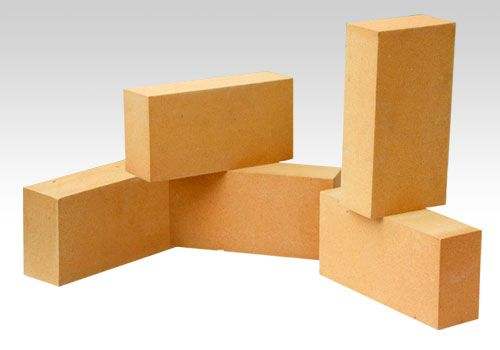Alkaline refractory bricks refer to refractory products with basic oxides such as Mg0 and CaO as the main components. The main varieties are as follows.
 (1) Magnesia refractory bricks refer to refractory bricks that use magnesite as the raw material, with periclase as the main crystal phase, and an MgO content of 80% to 85% or more. Its products are divided into two categories: metallurgical magnesia and magnesia products. According to the different chemical composition and uses, there are Martin sand, ordinary metallurgical magnesia, ordinary magnesia brick, magnesia-silica brick, magnesia-aluminum brick, magnesia-calcium brick, magnesia-carbon brick and other varieties. Magnesium refractory brick is the most important product among alkaline refractory bricks. It has a high degree of refractory, has good resistance to alkaline slag and iron slag, and is an important advanced refractory brick. Mainly used for open hearth furnace, oxygen converter, electric furnace and non-ferrous metal smelting.
(1) Magnesia refractory bricks refer to refractory bricks that use magnesite as the raw material, with periclase as the main crystal phase, and an MgO content of 80% to 85% or more. Its products are divided into two categories: metallurgical magnesia and magnesia products. According to the different chemical composition and uses, there are Martin sand, ordinary metallurgical magnesia, ordinary magnesia brick, magnesia-silica brick, magnesia-aluminum brick, magnesia-calcium brick, magnesia-carbon brick and other varieties. Magnesium refractory brick is the most important product among alkaline refractory bricks. It has a high degree of refractory, has good resistance to alkaline slag and iron slag, and is an important advanced refractory brick. Mainly used for open hearth furnace, oxygen converter, electric furnace and non-ferrous metal smelting.
(2) Dolomite brick is an alkaline refractory brick produced with dolomite as the main raw material. It is widely used in alkaline converters and can also be used as the lining of some refining packages outside the furnace.
(3) Forsterite refractory brick is a kind of refractory brick with forsterite 2MgO · SiO2 as the main composition. It is mainly used for grid bricks in open-hearth regenerative chambers, ingot bricks, bottoms of heating furnaces and in copper smelting furnaces.